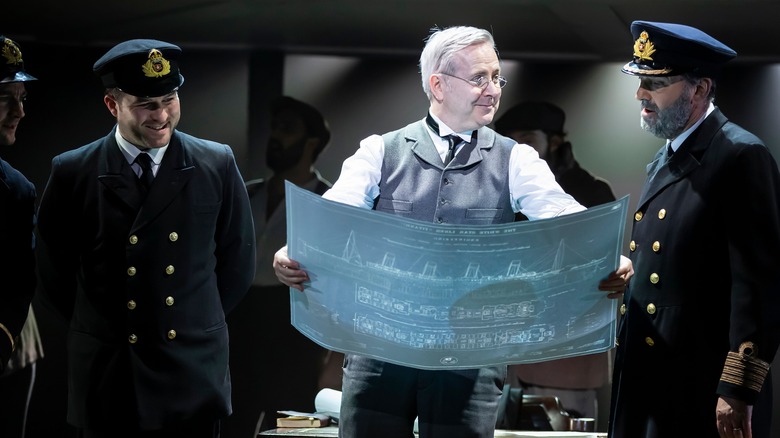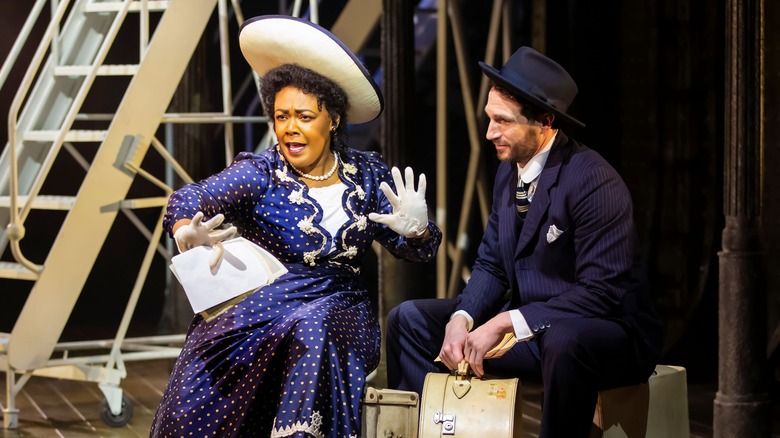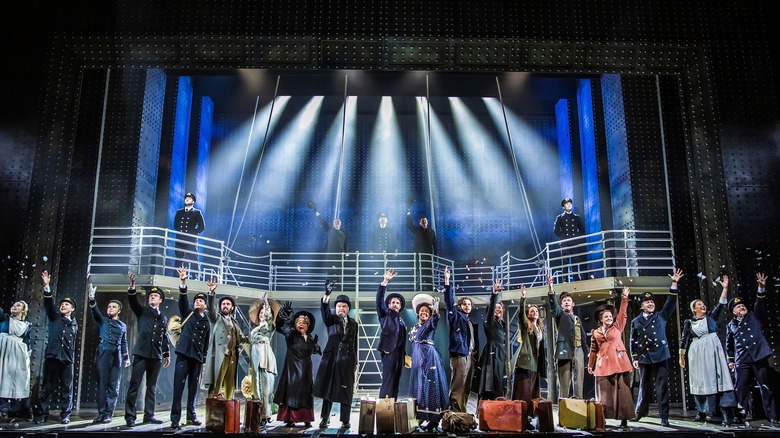Titanic: The Musical Review: A Devastating Musical About The Doomed Ocean Liner
The original 1997 Broadway staging of "Titanic: The Musical" created a legend of itself, rising from previews' technical snafus and mixed reviews before achieving a Best Musical Tony and a run of 804 performances. Nowadays, the title might sound like a memetic gag for those uninitiated with its existence. Really? A musical about the 1912 sinking of the RMS Titanic? But the music may just answer that by shattering the stoniest of hearts.
The morbidly curious or the die-hard theatre-heads who can't access or afford a live professional production now may get their chance. Coincidentally also sharing a 25th anniversary with James Cameron's blockbuster this year, "Titanic: The Musical" finally has a Fathom Events theatrical release, namely a capture of the Thom Southerland-directed production filmed at the Southampton's Mayflower Theatre. This BroadwayHD-produced capture (directed for the screen by Austin Shaw) preserves what has aged like fine wine: Maury Yeston's sumptuous score, buoyed by the currents of chorales and fusions of vocals. These honeyed harmonies can send skeptics floating to the stratosphere (Mark Aspinall handles musical supervision, with new musical arrangements by Ian Weinberger).
Class, love, and American Dreams
In a matter-of-fact portrait of class hierarchies, Peter Stone's book rotates around multiple passengers and seafarers — directly or loosely inspired by real people — without a central protagonist. Gracing the first class, Isidor (David Delve) and Ida Straus (Valda Aviks) discuss their legacy with their ownership of Macy's. The second class Alice Beane (Bree Smith, whose high-wattage giddiness lights up any scene) sneaks around the first-class amenities, much to the chagrin of her husband, Edgar (James Darch). Below in third class, a pregnant-out-of-wedlock Irish immigrant, Kate McGowan (Lucie-Mae Sumner), has her eye on a fellow immigrant, Jim (Chris Nevin). Deeper in the bowels, the coal shoveler Frederick Barrett (Adam Filipe) pines for his sweetheart, while lamenting that the proletariat labors only feed into the glories of their masters. He befriends Harold Bride (a charming Alastair Hill), a wireless telegraph operator, who extols his nerdy love of the telegraph in the wholesomely techno-optimistic "The Proposal/The Night Was Alive." And I'm just naming a few drops in a sea of characters.
However, lording above all these tales of love and American Dreams, human oversight is shaking hands with the greed of capitalistic interests. Politics brew between Captain Edward Smith (a dignified Graham Bickley), the shipbuilder Thomas Andrews (Ian McLarnon), and Chairman J. Bruce Ismay (Martin Allanson, who stops short of cartoonishness). This particular staging opens and bookends on the guilt of Ismay, who pressures Captain Smith to accelerate the maiden voyage to impress the news headlines. Although these men's real roles in the tragic sinking have been subject to historical controversy, these fictionalized tensions contribute to a cautionary tale about powerful men inflating their pride in their "Unsinkable" creation and the passengers that pay the price.
The musical staging by Cressida Carré, Southerland's direction and David Woodhead's set design shoot for economical rather than go-for-broke grandeur. Many productions have ramped up the spectacle, dating back to Stewart Laing's Broadway generous multi-level set design and Michael Cerveris singing Mr. Andrews' death aria while balancing on a 30-degree sloping set around sliding furniture. That's not even mentioning the Serenbe Playhouse's 2018 production that mounted Adam Koch's sinkable set design over a lake. By comparison, Southerland conducts the effects at a modest, but still effective, scope: the sweep of Howard Hudson's lighting and Andrew Johnson's groaning sound design to signal the iceberg collision and a second-story scaffolding that tilts for a one-person stunt.
'Shall we all meet in the autumn?'
The stage economy allows us to lean on the magnitude of the music, sung by a good-to-great ensemble (wearing Woodhead's period costume designs). However, the shot coordination could better service their performances. The live capture does a decent job (with editing work by Egli Keli) with generous wide shots and impressive low-camera angles, but I sense a sharper live capture would have leaned harder into the rapports. At times, the camera consigns itself to hovering at the side profiles of arguing couples or positions itself at a distance, so it can dampen the marital dynamic crucial for humanization.
With that said, "Titanic: the Musical" is good at wearing its heart on its sleeve. Any consciousness of the live-capture's shortcomings can melt away for a devastating Act Two when survivors have to take their shattered dreams to their lifeboats while the doomed must make peace with premature farewells. The love duet "Still," a paean to marital devotion, between Isidor and Ida never fails to twist the knife. In the show's penultimate chapter, this production leaves an elegant ghost-story touch that pays homage to the drowned. From the monumental "Godspeed, Titanic" opener to the waltz of "Autumn," Yeston's music has reinforced "Titanic: The Musical" lasting mileage in musical theatre.
"Titanic: The Musical" is playing at select theaters on November 4 and November 8.


